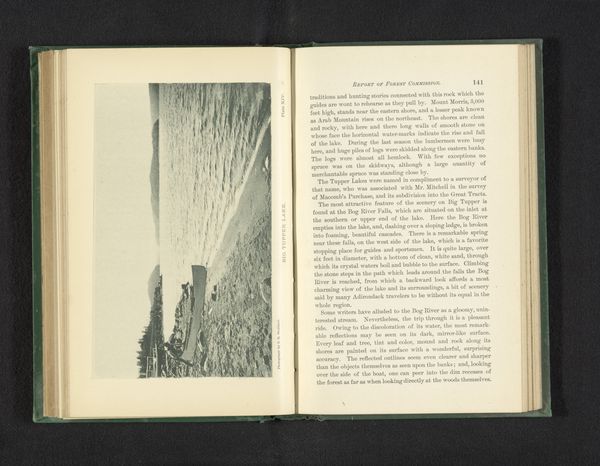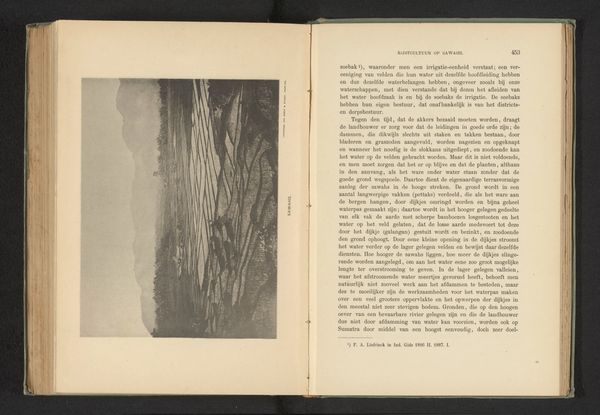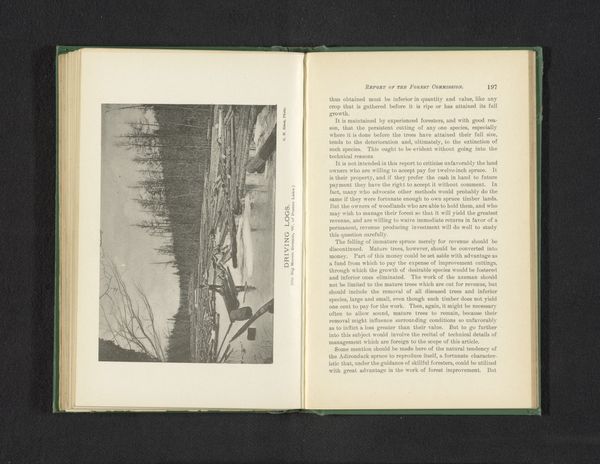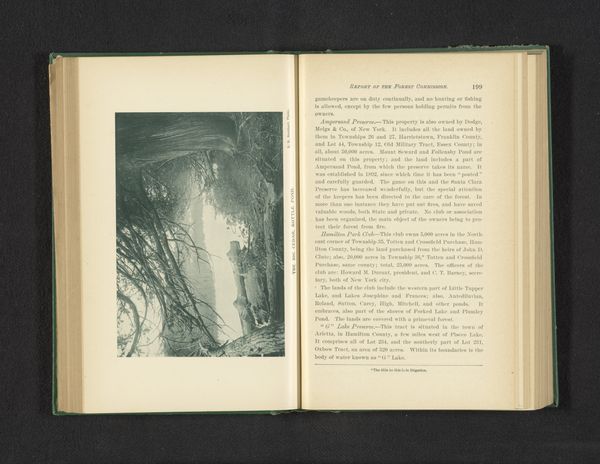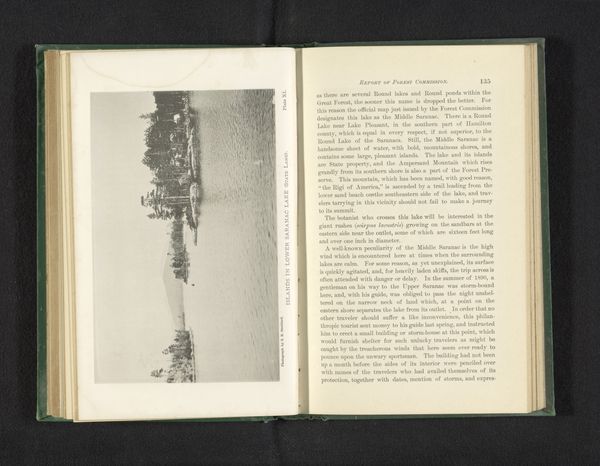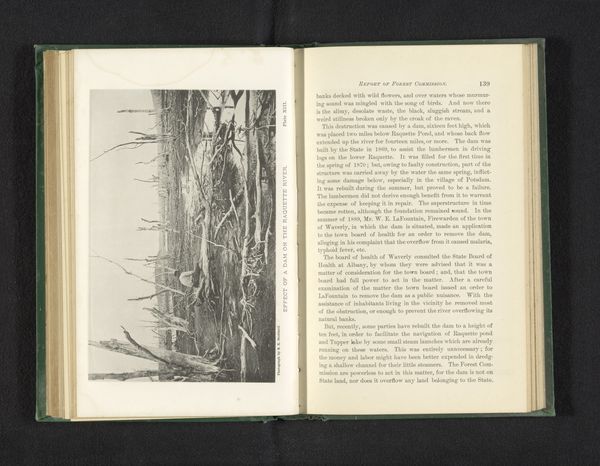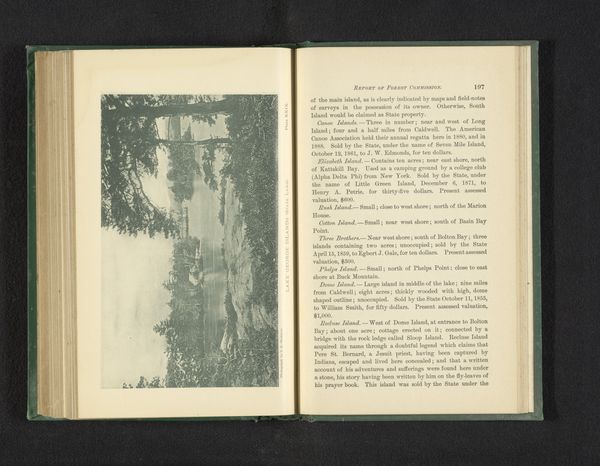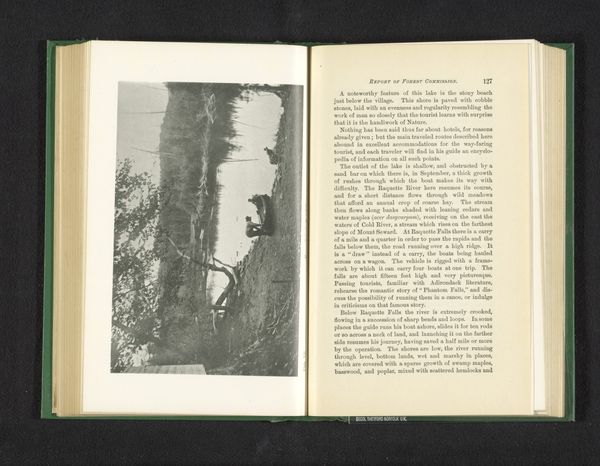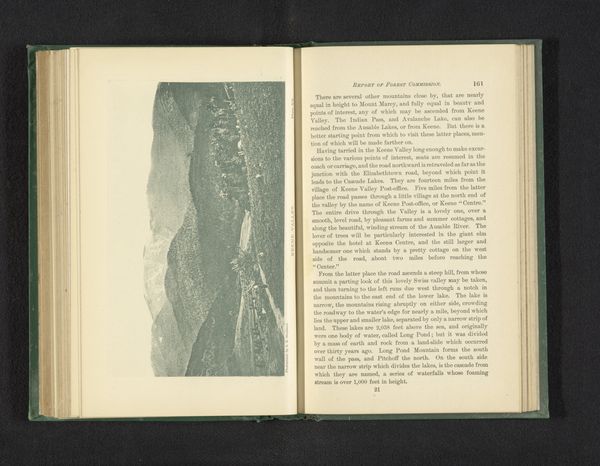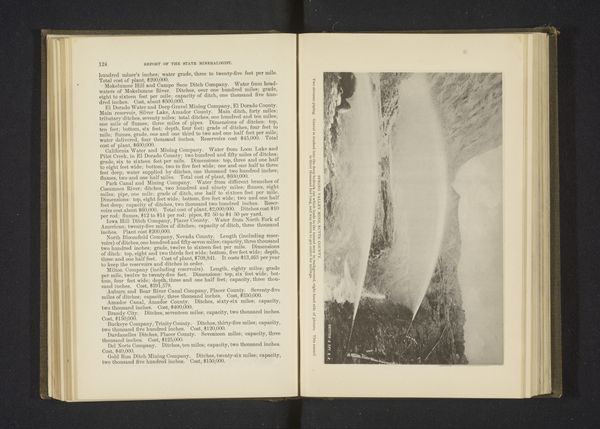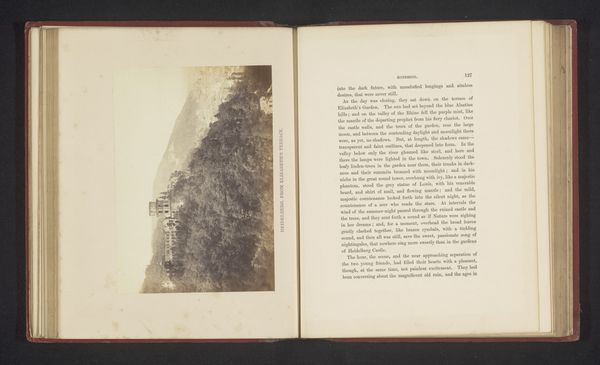
Dimensions: height 113 mm, width 177 mm
Copyright: Rijks Museum: Open Domain
Curator: I find myself utterly drawn in by this image. Editor: And what, pray tell, is captivating you today? Curator: This silvery, misty, and incredibly tranquil scene… it has such an ethereal quality. It's an old photographic print titled "View from St. Regis Mountain" made in 1891 by Seneca Ray Stoddard. It’s hard to believe that an image from so long ago can feel so fresh and immediate. Editor: "Fresh" is an interesting choice, considering the history tied up in wilderness photography and the way it obscures colonial exploitation of land. How do you read Stoddard’s perspective as mediated by tourism? Curator: It’s there—the suggestion of cultivated experience—but look at the way the light just skims the lake’s surface, how it captures that sense of boundlessness... it really brings forward the sensory experience of standing at that very point. I can almost feel the cool air and the sun on my face. And the inclusion of felled trees as a visual and narrative strategy cannot be discounted here. Editor: That "boundlessness" has always been a rhetorical tool deployed to justify invasion, you know. I agree there’s something compelling in the image’s silvery tones but think that viewing Stoddard’s picture only through a purely aesthetic lens disregards its social implications and historical baggage. Curator: Maybe it’s both? Stoddard, a key figure in the Hudson River School, wasn’t simply documenting beauty; he was crafting a narrative of pristine nature. And narratives are always complicated, reflecting both the observer and the observed. It's easy to forget how constructed all images truly are. Editor: Exactly. Recognizing the constructedness – acknowledging Stoddard’s specific viewpoint, situated in time and place – can allow for a more critical encounter with these vistas of so-called unspoiled wilderness. The relationship between landscape, photography and colonization, even tourism… it's always layered and messy. Curator: Right. Perhaps the enduring power lies not in its untouched idealism but in what it unintentionally reveals about our own changing relationship with the land.
Comments
No comments
Be the first to comment and join the conversation on the ultimate creative platform.
